- Home
- Things to Do in Sicily
- Greek Ruins in Sicily
- Selinunte
The Magnificent Grandeur of Selinunte: Ancient Ruins and Coastal Beauty
Let your steps guide you into the ancient city of Selinunte. Situated on the Western coast of Sicily, Selinunte was once an important trade center. Today, it is one of the island's main attractions.
Apart from the remarkable ancient ruins—temples and an akropolis—it also offers a wealth of nature's tranquility.
Greeks thought building their towns in symbiosis with the surrounding landscape was a good idea. Thus, Selinunte is nestled comfortably between the sea and the countryside. A visitor can still sense this harmonious impression today.
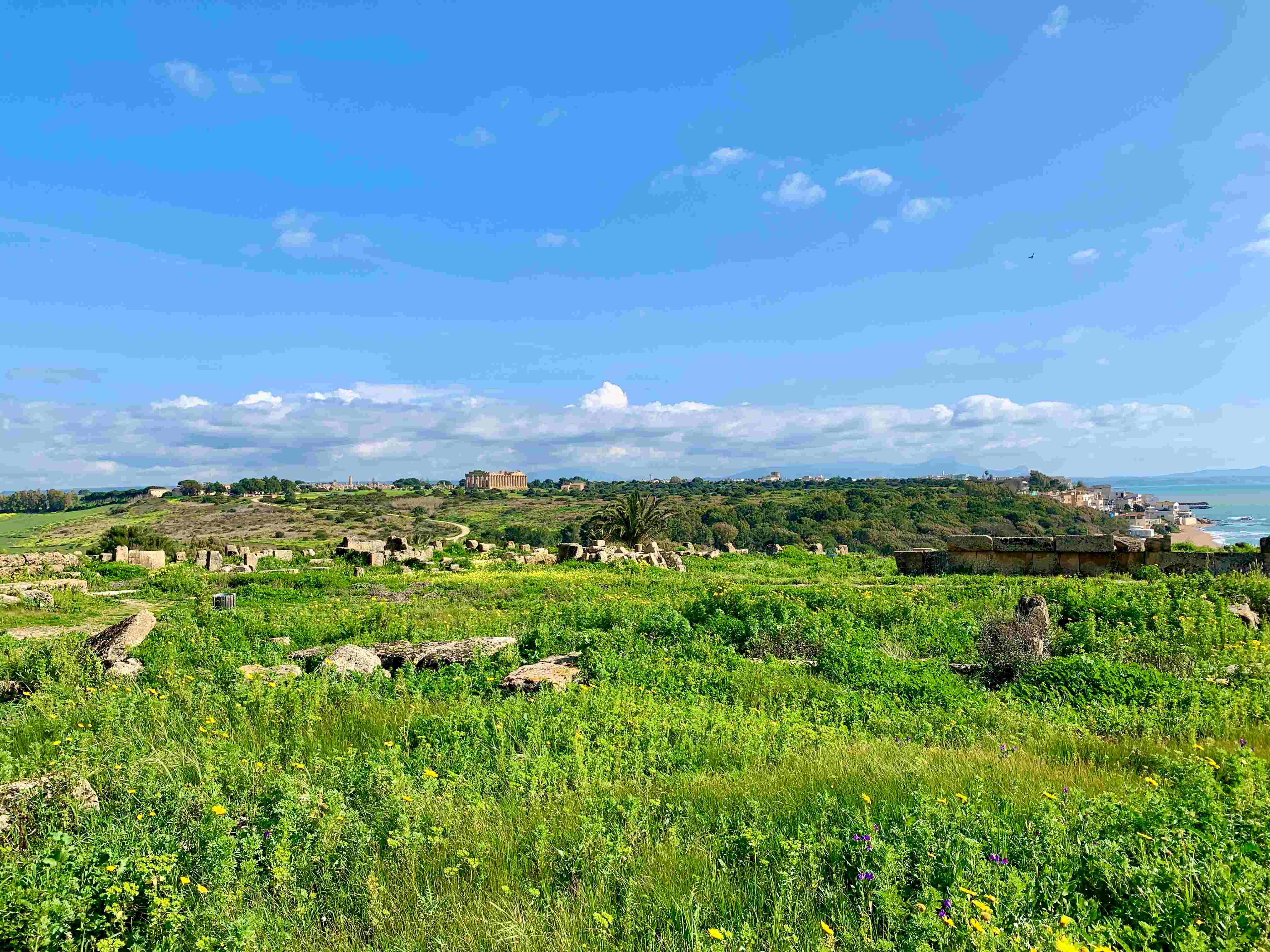 The view from the Acropolis towards the eastern hill of the park. On the right, you have the village of Marinella and one of the beaches right next to the park.
The view from the Acropolis towards the eastern hill of the park. On the right, you have the village of Marinella and one of the beaches right next to the park.The area can be enjoyed simply as a pleasant place for a day's walk. However, learning about the area's history makes it even more enjoyable.
As you wander through the remnants of temples and theaters, you can almost feel the whispers of the past brushing against your skin. The azure waters caress the shoreline beside the ancient ruins, offering a serene backdrop for this historical treasure trove.
Experience Selinunte's allure and delve into its mysteries. Discover a place where history and beauty converge in a mesmerizing tapestry waiting to be unraveled.
History of Selinunte
The known history of Selinunte began when Greek farmers settled there in the second half of the 700s BC.
The Greeks arrived in Sicily a hundred years before that. Sicily was part of the Greek colonization project in the western Mediterranean.
There may have been many reasons for the Greeks' arrival, but the most important was the lack of farmland. Greece is a mountainous region, so farmland had to be sought further afield. In exchange, the Greeks spread their already fairly advanced culture wherever they went.
The name Selinunte comes from the word for celery. Wild celery grew in abundance in the valley and became the city's symbol, used on coins and other artifacts.
Selinunte's location was ideal. It was surrounded by good agricultural land between two rivers and next to the sea. The latter was important because of the trade.
And yes, soon enough, Selinunte became an important trading town. Its inhabitants—the Greeks, the Carthaginians, local tribes, and many others—came from around the world to do business with each other.
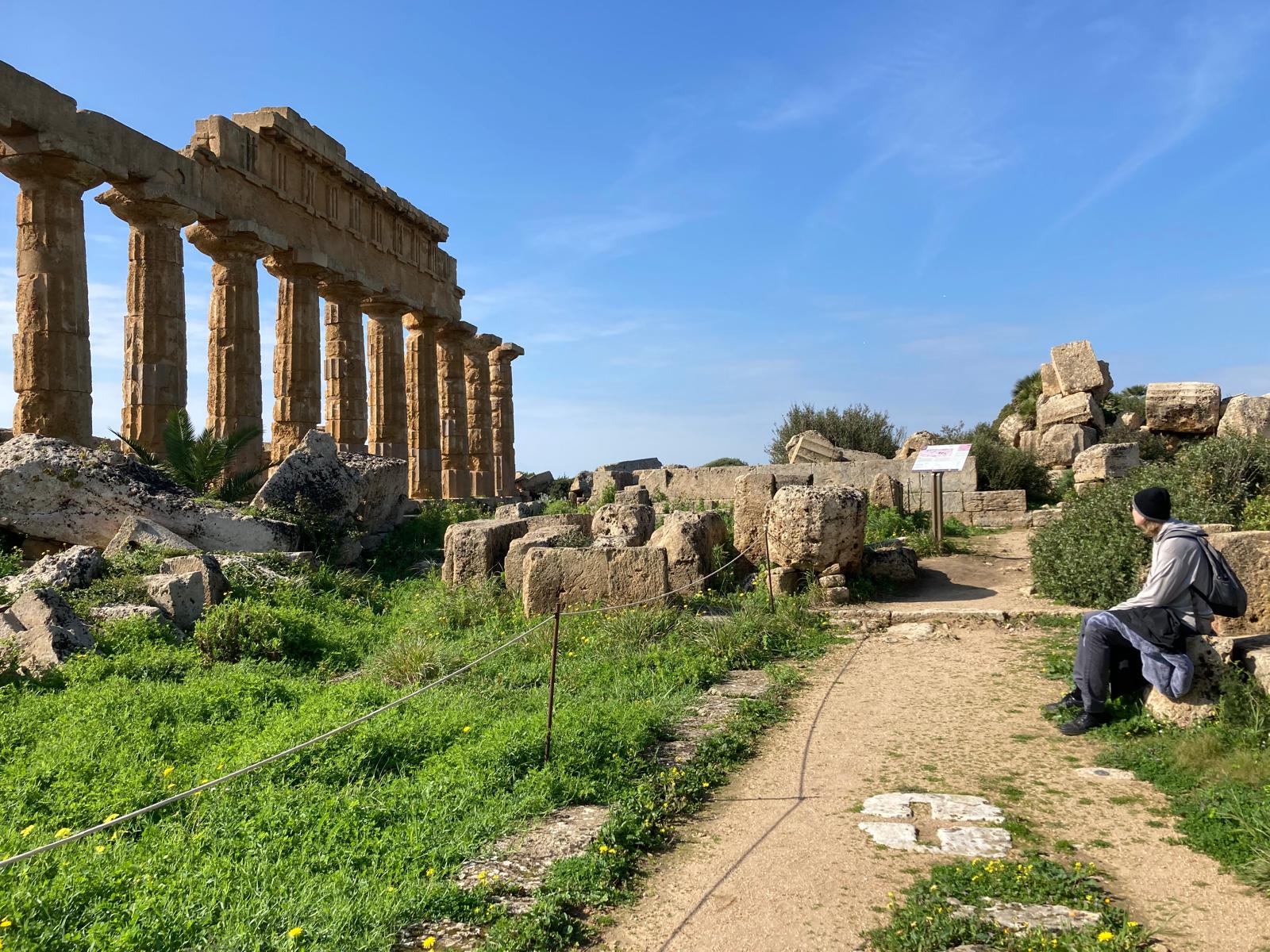 Wondering at the remnants of an ancient Acropolis.
Wondering at the remnants of an ancient Acropolis.The Destruction of Selinunte
Selinunte did its best to maintain good relations with the surrounding people. Eventually, however, the time came for it to choose sides. That was around 500 BC when the war broke out between Carthage and Greece.
Selinunte supported the Carthaginians because they saw it as more economically beneficial than choosing the Greek side.
Selinunte survived this war without significant damage. After that, several generations were able to live in peace and prosperity. The end came only later. This time, they had Carthage as their enemy.
The reason was the Selinunteans' desire to expand their trade into new territories. This they did at the expense of another famous ancient town, Segesta. For a long time, the Segestans ignored the situation. In the end, though, things escalated, and the war broke out in the late 400s BC.
Segesta received support from Carthage, and Selinunte was waiting for help from Syracuse. Unfortunately, Syracuse itself was at war with Athens, which delayed the arrival of aid.
By the time the much-needed aid arrived, there was nothing more to be done. Hannibal, the Carthaginian warlord, had attacked Selinunte from two opposite directions and invaded it.
The year was 409 BC. 16,000 townspeople were slaughtered. Only the women and children who fled to the temples were spared. After the destruction, Selinunte remained inhabited but never again rose to its former prosperity.
The next century and a half were spent under Carthaginian rule. Only part of the former territory remained inhabited. Then, when Rome started the first Punic war with Carthage, Selinunte felt its chance had come.
The town sided with the Romans, which might have seemed like a good idea at the time but was, in reality, a bad decision. The Carthaginians came and destroyed the city yet again. This time, Selinunte did not rise anymore. And so it is that the city's final end came in 276 BC.
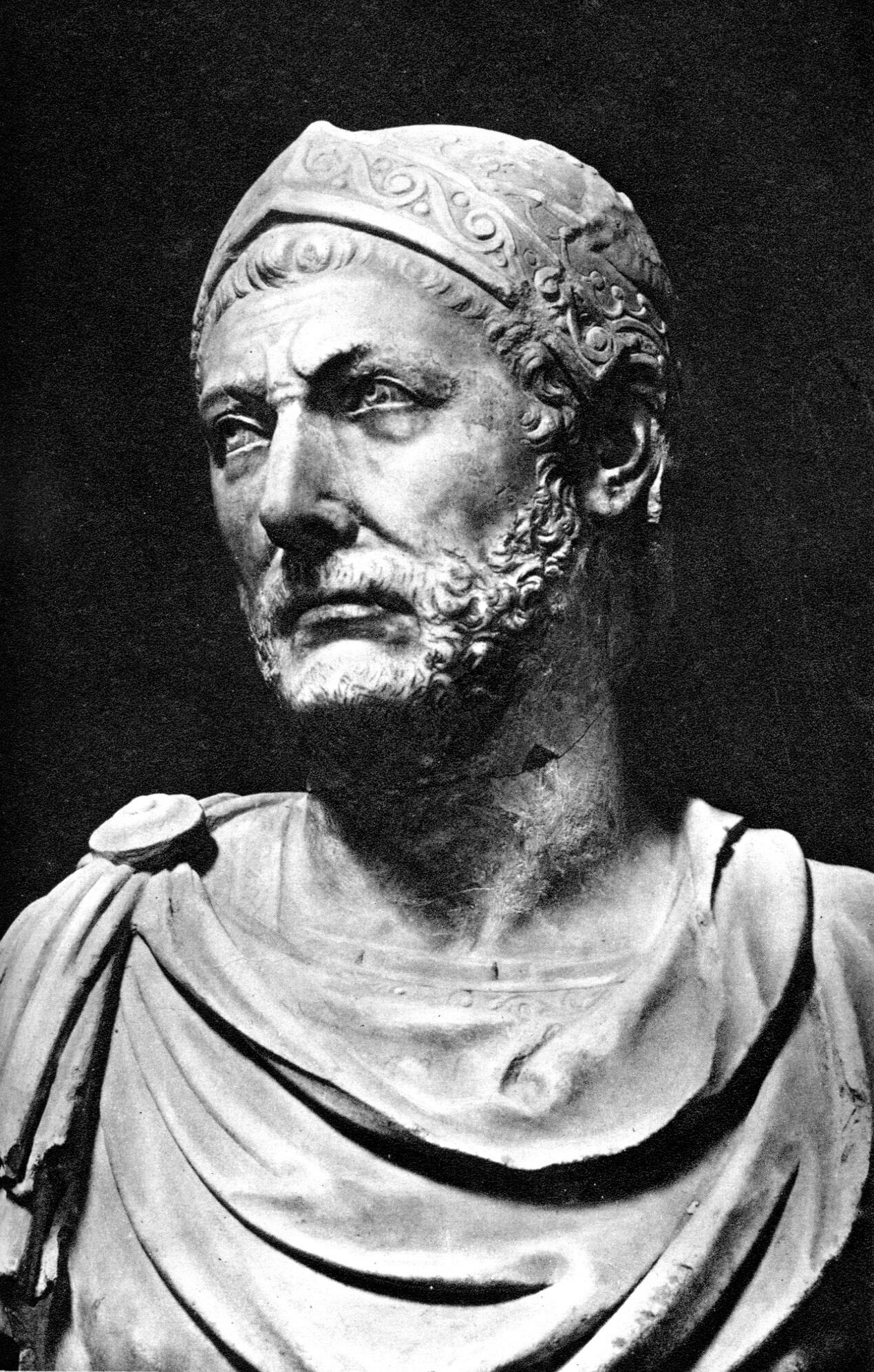 Hannibal.
Hannibal.Exploring the Ancient Ruins of Selinunte
As you step into the archaeological park of Selinunte, you'll soon realize its grandeur. The park spans 270 hectares, making it one of Europe's most significant archaeological sites.
Entering through the main gate, you will immediately see the largest temple in the area on your right. The Acropolis, the ancient town center, sits on a hill near the sea.
We'll soon return to the temples, but first, let's look at the ancient "downtown," the Acropolis. It once followed a straightforward grid pattern, which transformed in 409 BC when Carthage destroyed the city.
Under Carthage, the old city plan got thrown into the trash bin of history. In the following period, the city took on a new look, which is also reflected in the archaeological remains.
The grid plan and the temple area underwent a transformation. People moved to live near the former temples on the Acropolis, and the once sacred site became profane—a new city on top of the old.
When the city was repopulated, settlement was concentrated on the Acropolis, whereas previously, people had lived in the broader area. One of the former "suburbs" was turned into a cemetery. Remnants of this Necropolis are still there, further down the road from Acropolis.
The Architectural Marvels of Selinunte
The architectural landscape of Selinunte is a testament to the ingenuity and artistry of ancient Greek civilization. The city's temples showcase the evolution of architectural styles while adhering to the symmetry and proportion principles defining classical architecture.
The grandeur of these structures is not merely aesthetic; they reflect the cultural and religious practices of the time, serving as places of worship and community gathering.
The temples of the Acropolis were built soon after the city was founded, in the 700s and 600s BC. Today, the temples are in various states of decay. Some are more visible, others are piles of stone.
Cultural artifacts found on the site, such as statues and sculptures, have been transferred to the Palermo Archaeological Museum.
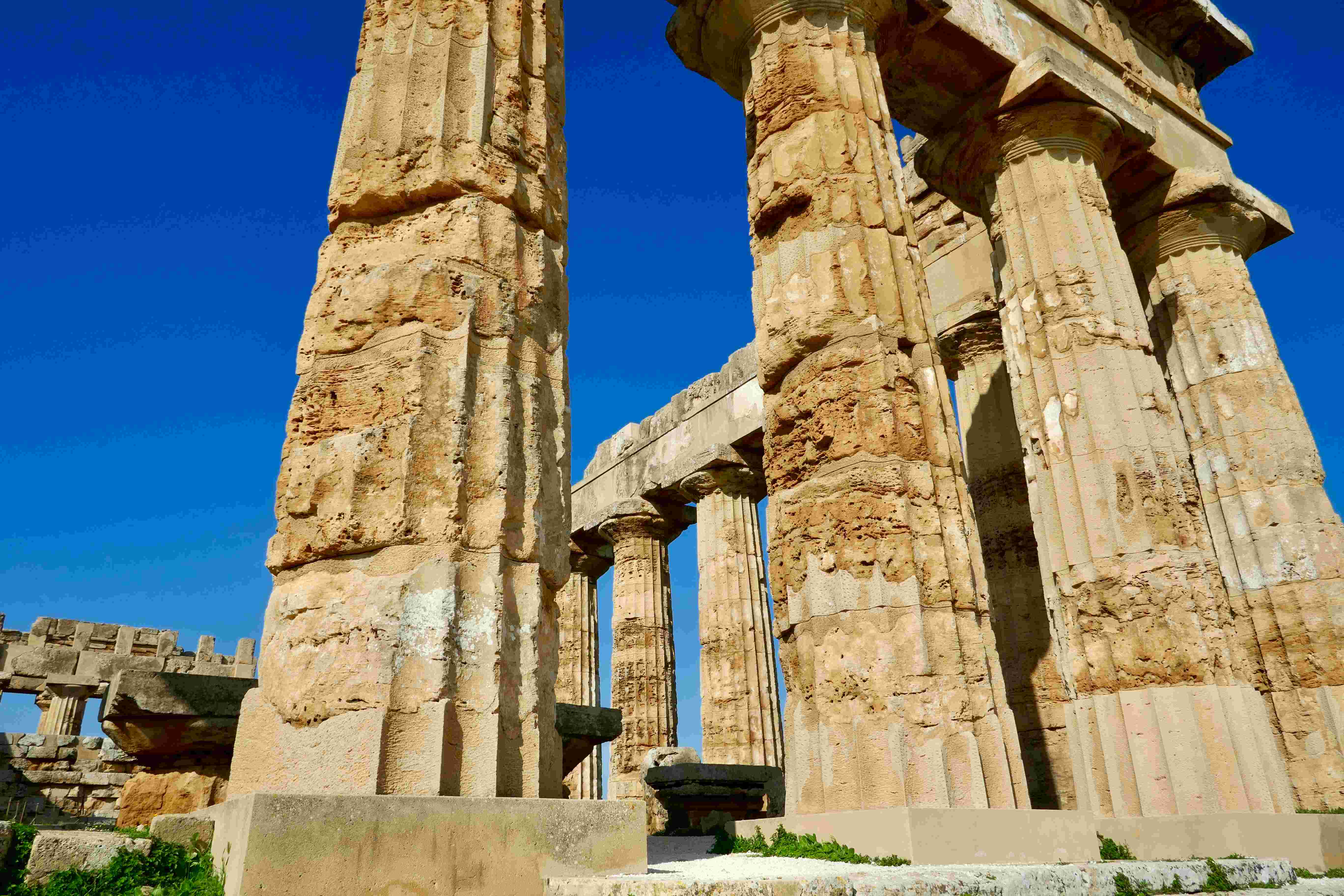 Temple E.
Temple E.The temples on the eastern hill of the area are where one of the entrances to the city used to be. What remains of them is still impressive just by their size alone. Indeed, they must have aroused astonishment and awe in their own time.
The most magnificent of these is Temple E. It is close to the current entrance to the site and is impossible to miss once you have entered the area.
This temple was dedicated to Hera, the wife of the main god Zeus. Hera was a fiery goddess whose domain was maintaining order, especially in marriages. In fulfilling this task, she had quite a job with Zeus alone, but apparently, she also had time for human affairs.
The sculptures in the temple's frieze can be seen at the Palermo Archaeological Museum. Each of the three scenes depicts a violent mythological event: Athena chastises a giant, Heracles fights the Amazons, and Acteon is harassed by angry dogs.
Temples F and G, next to Temple E, are mostly in ruins. Still, the sheer number of collapsed stones impresses.
Temple G appears to have been dedicated to Zeus and, when assembled, was the largest building in the area. The remaining pile of stones also suggests this.
In fact, it was so huge that it was never completed, even though it was under construction for over a hundred years, from 530 BC to 409 BC. The long building project ended when the Carthaginians wiped out the whole city.
 Walking among the ruins of the Temple of Zeus. There are lots more stones behind this first heap of rocks.
Walking among the ruins of the Temple of Zeus. There are lots more stones behind this first heap of rocks.Planning Your Trip to Selinunte
Places like Selinunte are best visited in spring, early autumn, or winter when you don't have to sweat in the scorching sun. We went there on a sunny February day, which was nice and warm.
This kind of weather lets you explore the archaeological park leisurely.
The best way to arrive to Selinunte is by car or taxi. Public transport to the area is poor and involves many twists and turns - unless you are staying somewhere near.
We arrived from Sciacca and the taxi was €150 for a round trip. It was a discounted price because we were traveling during the off-season. In the tourist season the price for a car may be higher, but as there are more people attending it might still cost less per person.
Still, I recommend renting a car in these south-western parts of the island if possible, as the public transport options are not as great as on the northern and eastern coasts.
Inside the park, you may either walk or rent a golf cart. The latter might be helpful if you want to visit the more remote parts of the site. The main attractions are, though, neatly within walking distance from the main gate.
Comfortable walking shoes are a good idea. If you visit during a warm period, take swimwear, as two fine beaches are attached to the site. And don't forget your camera.
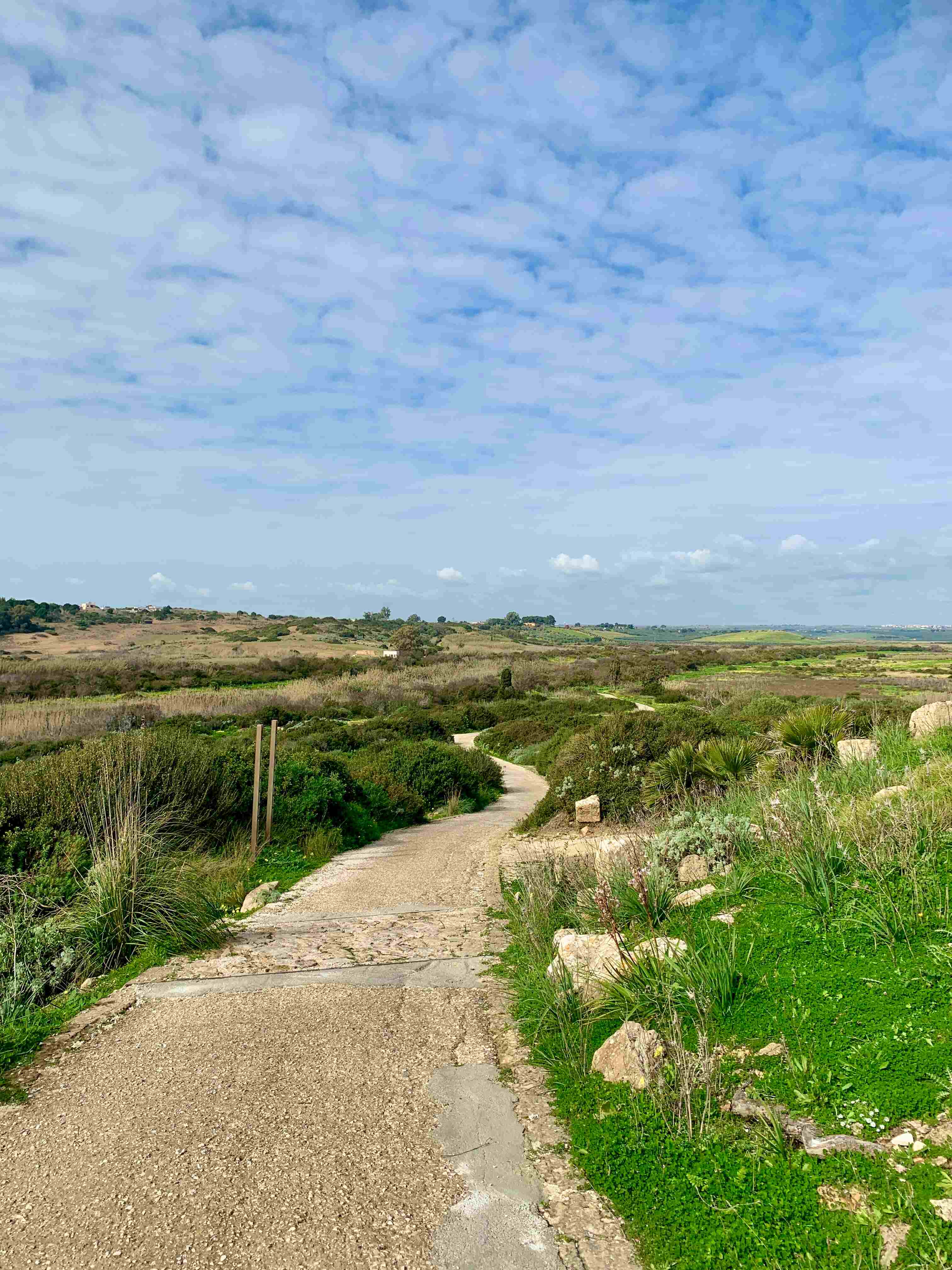 The roads inside the park are mostly paved. If you plan to explore the whole area, you will need to do quite a bit of walking.
The roads inside the park are mostly paved. If you plan to explore the whole area, you will need to do quite a bit of walking.Conclusion
Selinunte is a treasure trove of history, culture, and natural beauty. Selinunte offers a unique experience that resonates with everybody, from the awe-inspiring ancient ruins to enchanting coastal landscapes - and beaches.
The harmonious blend of architecture and nature creates a captivating atmosphere, allowing travelers to connect with the echoes of history while enjoying the serene beauty of the Mediterranean.
Selinunte invites you to slow down, reflect, and appreciate the beauty surrounding you in a world that often moves too quickly.
(March 28, 2025)
Recent Articles
-
The Story of Tommaso Buscetta: From Mafia Boss to Key Witness
Mar 30, 25 05:12 AM
Tommaso Buscetta built Sicilian Mafia into a global empire - which he then destroyed. -
Ancient Greek Ruins in Sicily - The Cradle of Civilization
Mar 29, 25 05:41 AM
Ancient Greek ruins in Sicily: The most spectacular in the whole world -
The Ancient Grandeur of Selinunte
Mar 28, 25 06:38 AM
Selinunte: A perfect blend of ancient history and natural beauty in Western Sicily
Follow MANY FACES OF SICILY on Facebook, Instagram, Bluesky & Pinterest
Contact: vesa@manyfacesofsicily.com




